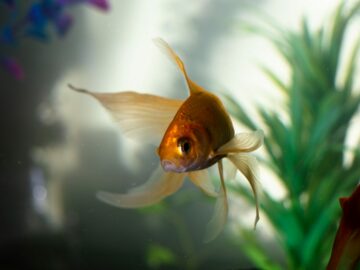Cheetahs are the fastest animals on land, but there’s more to these big cats than just their speed. They are specialized predators that have evolved unique adaptations – both features and strategies – to survive in the tough African savannahs. If you want to learn more about these speedy hunters, here are some fun facts about cheetahs to get you started.
Fast Facts About Cheetahs to Share with Your Loved Ones
Their Bodies Are Built for Speed
Courtesy of Pixabay
In the savannah where tree cover or places of ambush are scarce, predators have to come up with various weapons and strategies to catch prey. In the case of cheetahs, their primary weapon is speed and their most effective strategy is a high-speed chase. For this to be successful though, the cheetah’s body had evolved several unique traits:
- Their claws are only semi-retractable (almost permanently out) to help gain traction as the cheetah runs, while their hard paw pads act like rubber on a tire. Cheetahs are the only cats that cannot retract their claws. Watch them run here.
- They have slim and aerodynamically efficient body shapes to reduce drag.
- They have a long tail that is used for stabilization, especially during sudden changes in direction. They act like rudders keeping the cheetah balanced as it runs.
- Their spine is extremely flexible, allowing the cheetah to stretch and cover more ground in every stride. At full speed, they can cover 6-7 meters with each stride.
- They have larger nostrils, wider lungs, and bigger hearts to help increase oxygen intake and accommodate faster circulation (for powering those leg muscles).
They Can Run Fast, but Not Far
A cheetah can go from 0-60 mph in just 3 seconds. (That’s the same acceleration as a Tesla Model 3 or a McLaren Senna.). However, since these explosive runs require massive amounts of energy, they’re impossible to sustain for a long time.
High-speed chases for cheetahs are often limited to under a minute and would often cover just 200-300 meters. Any longer or farther than this, and the chase results in failure.
To increase their success, cheetahs often choose the younger (and hopefully less experienced) prey individuals or those that look weaker, or they form a small team (mother and offspring) or a coalition (group of 2-3 male individuals).
They Are Daytime Hunters
Courtesy of Pixabay
To avoid clashing with the bigger savannah predators (lions, leopards, and hyenas) who like hunting at night, cheetahs do their hunting in the daytime. Unfortunately, hunting in broad daylight has its difficulties too. Aside from them being completely visible to their prey, it’s also easier for predators to notice when they make a successful kill. This is why they often go for smaller prey (young antelopes, rabbits, ground birds) and eat their kills as fast as they can (before other predators come and steal their food).
They have keen eyesight that can spot potential prey individuals from a distance and black streaks running down their cheeks that reduce glare from the sun. However, they still prefer stalking their prey to reduce the distance between them and their target before they launch into a sprint.
Their Speed Has a Huge Tradeoff
To be fast, cheetahs have to be slim and appropriately shaped. As a result, they don’t have the bulk or the power to take on large prey or fend off attacks from other predators like hyenas, lions, or even jaguars. When other carnivores come to snatch their kills away, they often just take off and leave with whatever few morsels they can carry. Watch a gang of vultures take on a cheetah and steal its prey here.
They Can’t Roar
Despite being considered one of the big cats, cheetahs can’t roar. Unlike their other African cousins, the lions and the jaguars, cheetahs have a voice box that resembles those found in smaller domestic cats. Their smaller, triangular voice box lacks the shape and elasticity of the larynx that allow other big cats to produce the familiar roar. Instead of roaring, cheetahs purr, hiss, and growl, but they don’t roar.
They Employ Interesting Camouflage
Courtesy of Pexels
Cheetahs use camouflage both for hunting and defensive purposes. Once they lay motionless on the ground, spots on their body offset shadows in the gray-hued grass allowing them to blend in and close in on their prey without being noticed. Only when they get close enough will they launch into a full chase. Defensively though, the spots also help make them become “invisible” to other bigger predators in the area.
For additional protection, cheetah cubs are born with a mantle – extra long hair that looks like a full-body mohawk. Researchers believe that this mantle makes the little cubs appear like honey badgers to keep other animals away. After all, honey badgers have a mean reputation and even the other big cats stay away from them because of their fierce nature.
They Are Steadily Heading toward Extinction
Because of poaching, illegal trade, the decline of wild prey, and the loss of habitat, cheetahs are speeding toward extinction. They used to roam the Arabian peninsula and even central India, but are now only seen inhabiting less than 10% of their previous range. With less than 8000 individuals estimated in the wild, these magnificent predators might likely end up being just another page in the history books.
Frequently Asked Questions
What is the maximum speed a cheetah can reach?
At full throttle, a cheetah can reach speeds of up to 110-120 km/h (68-75 mph). They can also accelerate from 0 to 80 km/h in just three seconds. If that’s not amazing enough, these speedsters can even make a 90-degree angle turn at 80 km/h, thanks to their long tail and non-retracting claws.
What is the life expectancy of a cheetah?
In the wild, cheetahs only live up to 4 – 7 years old. 90% of cheetah cubs don’t even make it to adulthood. However, in captivity, they have been known to reach 14 – 17 years of age. The difference is probably due to the absence of competition from other predators, removal of threats from humans, and medical support to treat diseases or possible injuries in animal facilities.
Can cheetahs be domesticated?
Cheetahs have never been domesticated. Although historical records show these cats being kept as pets by some rulers and popular people, they will never be like your domesticated cats. Not only do they have very unique requirements and temperaments, but they are also wild animals, and have evolved to be that way through thousands of years. There are also regulations about keeping these animals, so you could end up in jail if you try to domesticate one.







